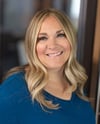The NAIC feels that the differences in line titles and degree of granularity between schedules results in difficulty cross-comparing information from one schedule to another. The intent of these changes is to line up the granularity detail of the lines of business in the Property & Casualty filing to match the Life/Fraternal annual statements. This not only brings more uniformity across the annual statement filings, but also within the schedules across the IEE, Underwriting Exhibits, and State Pages.
As a result of the new levels of granularity, the categorizations are expanding more than threefold. As an example, “Other Accident and Health”, Line 15 in the underwriting exhibits, is being replaced with nine categories. This level of detail may or may not be available in a company’s current reporting infrastructure. Insurers will have difficulty implementing this reporting change if they do not have their data sources broken out in sufficient detail or within the same system. It could be that this category of data is currently maintained in several different systems, for example, an Excel spreadsheet, a policy administration system, a data lake, general ledger, or subledger. All data sources may be needed to get the categorizations right under these new requirements. In addition, all this data needs to be reconciled and tied out across systems and schedules. Finally, the NAIC is not only requiring this change on a go-forward basis starting in 2022, but the expansion also creates the challenge of restating 2021 year-end data to conform to the new format.
Many carriers will likely need to adjust their data models including how they source and capture data. The sooner insurers plan for this conversion, the easier it will be to navigate this major change in granularity rules.
For more information about this topic, contact Larson & Company today.


.png)




